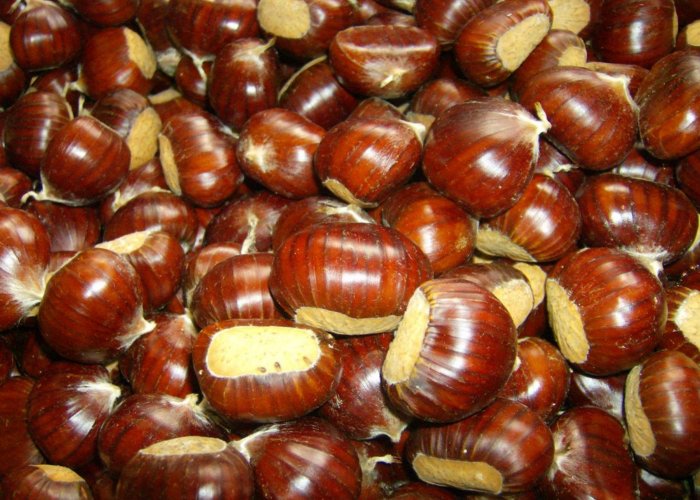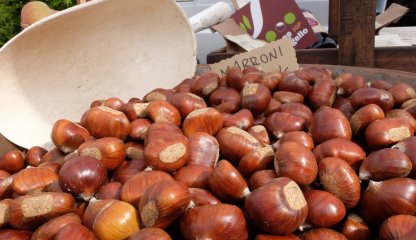The Mugello Chestnut IGP



An ancient and traditional autumn fruit
Among the typical products of Tuscany, it is impossible not to mention the Marrone (Chestnut) of Mugello IGP. Its fruits can be eaten both fresh and dried, with a wide variety of preparations and recipes. Moreover, the wood of chestnut trees is a fundamental component of local handicrafts.
The cultivation of fruit chestnut groves in the Mugello area dates back to Roman times, but it is from the Middle Ages onward that we have numerous documents and certain news about the spread and importance of the crop, with particular reference to chestnuts. The centuries-old chestnut groves in the area have continued to be an important and irreplaceable source of food and income for the local people, so much so that the chestnut tree has earned the nickname "bread tree".
Characteristics
Mugello chestnut fresh in the shell is characterized by medium to large size; it has a predominantly ellipsoidal shape, with a faintly pronounced apex. It usually has one side face tending to be flat and the other markedly convex. The seed is white-fleshed, crisp, with an almost groove-free surface and a pleasant, sweet flavor.
IGP Chestnut is produced between the territories of Mugello and Val di Sieve in particular Dicomano, Marradi, Palazzuolo sul Senio, Borgo Lorenzo, Firenzuola, Londa, Rufina, Godenzo, Scarperia and Vicchio di Mugello: about 3,300 hectares of chestnut groves.
Mugello chestnut fresh in the shell is characterized by medium to large size; it has a predominantly ellipsoidal shape, with a faintly pronounced apex. It usually has one side face tending to be flat and the other markedly convex. The seed is white-fleshed, crisp, with an almost groove-free surface and a pleasant, sweet flavor.
IGP Chestnut is produced between the territories of Mugello and Val di Sieve in particular Dicomano, Marradi, Palazzuolo sul Senio, Borgo Lorenzo, Firenzuola, Londa, Rufina, Godenzo, Scarperia and Vicchio di Mugello: about 3,300 hectares of chestnut groves.
Gastronomy
Roasted or boiled, they express all their goodness in autumn and are very versatile in a wide variety of preparations, from chestnut cake to marron glacé.
Roasted or boiled, they express all their goodness in autumn and are very versatile in a wide variety of preparations, from chestnut cake to marron glacé.



